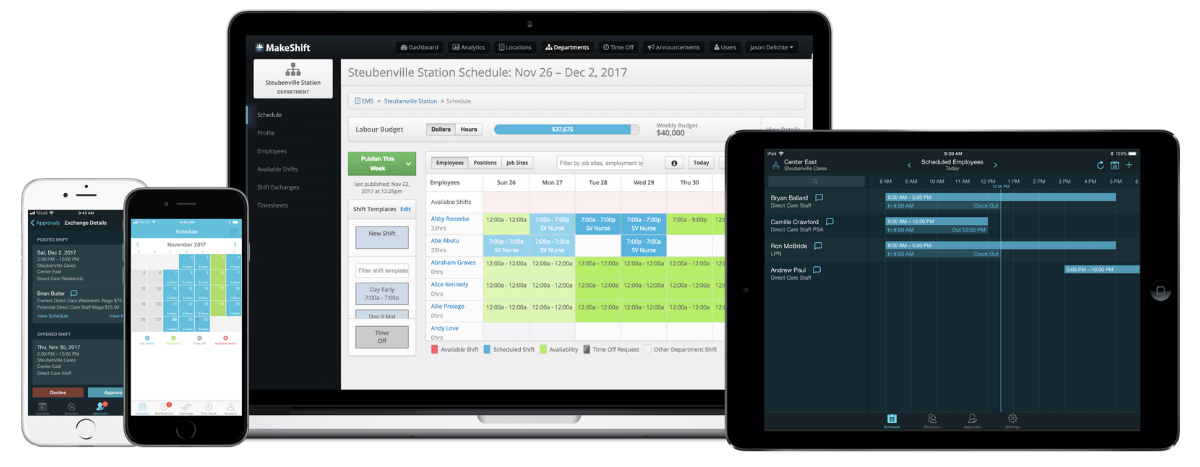We all know that keeping skilled nurses on staff is getting tougher by the day.
A stellar nurse retention rate boosts employee morale, improves patient care, and keeps your healthcare facility running like a well-oiled machine.
But the odds aren’t in your favor…
- In 2021, the turnover rate for staff RNs jumped by 8.4%, making the national average 27.1%.
- Over the last 5 years, specialized RN departments had a cumulative turnover rate between 101.3% and 111.4%. Essentially, every 5 years, these departments will turn over their entire RN staff.
- More than 1/3 (34%) of nurses say they’ll likely leave their jobs soon.
Today, we’re showing you how to beat the odds with 7 strategies to help hang on to talented nurses.
- The Impact of Nurse Retention
- 7 Strategies To Boost Nurse Retention
- How MakeShift Can Help Raise Your Nurse Retention Rate
- FAQs on Nurse Retention
- Beat the Odds of Low Nurse Retention
The Impact of Nurse Retention
In healthcare, nurse retention is more than a statistic. It's a vital component of quality care and institutional stability.
The turnover of nursing staff not only disrupts the seamless flow of care but also impacts the morale of your staff that stayed and imposes significant challenges on the healthcare system.
Let’s hit the most important nurse retention rate facts:
Fact #1 — You’ve got to grasp the severity of nurse retention
High turnover in the nursing industry not only disrupts continuity of care but also strains the healthcare system, leading to higher recruitment and training costs as well as a loss of valuable institutional knowledge.
High nurse turnover amplifies the challenges associated with the existing shortage of experienced nurses.
When you regularly have veteran nurses leave, you end up with newer, inexperienced nurses with no one to mentor them. This results in lower-quality patient care and unhappy, burned-out nurses who might rethink their career choice and get out of dodge.
Fact #2 — The cost of nurse turnover & the ROI of happy nurses
The financial burden of nurse turnover is hefty. The average cost of replacing a nurse (including recruitment, onboarding, and training expenses) is $40,038.
Each 1% change in RN turnover either costs or saves the average hospital a whopping $270,800 annually.
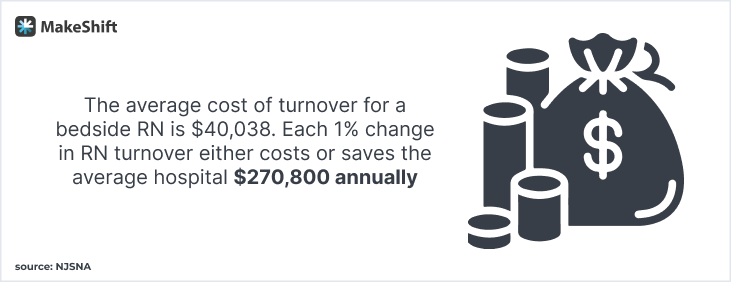
Investing in nurse job satisfaction and well-being can yield a sweet return on your investment in the way of:
- Reduced turnover-related costs
- Better patient care
- Enhanced reputation and trustworthiness of your facility
Fact #3 — Impact on patient care and trust
Low nurse retention rates can directly impact patient care quality. That’s because new, less experienced nurses can’t provide the same expertise and personalized care as seasoned nurses can.
This can potentially lead to compromised patient safety and satisfaction.
Consistent nurse staffing and retention contribute to building patient trust. In other words, fostering long-term relationships between patients and their nursing teams can positively influence patient loyalty and their perception of care quality.
7 Strategies To Boost Nurse Retention
If your nurse retention rates are lower than you’d like, don't worry. We’ve got 7 strategies to boost your retention rates and make your nursing staff happy and feeling appreciated.
1. Nurse-centric recruiting & onboarding
Let’s start at the beginning. Don’t wait until nursing candidates are part of the team to focus on retention — prioritize job satisfaction right out of the gate.
We’ve compiled a list of the top benefits today’s nurses want. Use this as a 🗹 checklist against your current benefits package to decide what to add or what benefits need beefing up.
- Sign-on bonuses — These go a long way in wooing new nurses. They can pay off student debt or sock it away for a rainy day.
- Competitive salary — Offer competitive base salaries and performance-based bonuses to recognize their expertise and dedication.
- Prioritize work-life balance — Implement PTO policies that allow for work-life balance, including paid maternity and paternity leave, sick leave, and vacation days.
- Childcare assistance — On-site or subsidized childcare facilities or programs to ease work and family life challenges.
- Retirement plans — Robust retirement savings plans, like 401(k) or pension plans, with employer contributions to help nurses secure their financial future.
- Additional benefits like RSUs — Offer RSUs that vest over time, giving nurses more incentive to stay with your organization longer.
- Shift differentials — Offer additional compensation for working night shifts, weekends, or holidays to acknowledge the demanding nature of nursing schedules.
- Professional liability insurance — Provide professional liability insurance coverage to protect nurses from potential legal issues related to patient care.
- Employee assistance programs (EAPs) — Give your nurses access to EAPs that provide confidential counseling and support for personal and work-related issues.
- Health and wellness benefits — Offer wellness benefits like gym memberships, nutrition counseling, and preventive health screenings to promote a healthy lifestyle.
- Transportation and commuting benefits — Provide subsidized or flexible transportation options, like public transit passes or parking discounts, to ease commuting stress.
- Recognition and rewards — Recognition programs that celebrate nurses' achievements, like "Nurse of the Month" awards or bonuses for exceptional performance.
- Uniform and scrubs allowance — Scrubs can be spendy. Offer reimbursement or provision of uniforms and scrubs, reducing the cost burden on nurses.
- Financial planning services — Make financial planning services and resources accessible to help nurses manage their finances effectively.
- Concierge services — Offer concierge services to run errands for the staff during a long work day to offset the amount of time required at the hospital when working 12-hour shifts. Since hospital nurses don't have time to leave during their shifts, this can be a HUGE benefit to ensure they can still get important tasks done on work days.
- Employee wellness rooms — Quiet, comfortable spaces within the workplace where nurses can recharge, relax, or meditate during breaks are a welcome addition.
Once hired, provide comprehensive nurse onboarding.
Training new nurses thoroughly on tasks and technology goes a long way (payroll, scheduling software, healthcare records…etc.) in making new nurses get a solid start at your facility.
Focus on building confidence and promoting cohesiveness — a tour, a welcome kit, a team lunch, or another fun team activity can make a new hire feel welcome. Ask your current nursing staff for feedback on your onboarding process. They’ve got a unique perspective because they’ve been through it.
2. Flexible nursing staff scheduling
Healthcare is known for chaotic scheduling. Nurses, particularly, struggle with work-life balance and not having control over their work schedules. And when your nurses’ schedules affect their personal lives, you’ll most likely lose them.

In fact, more than 1/3 (34%) of nurses said they’d likely leave their jobs by the end of 2022.
However, you can combat nurse scheduling woes by focusing on these 2 areas:
- Flexible nurse scheduling — Offer more schedule flexibility for your nursing staff. That may be more PT shifts, job sharing, or shift swapping to achieve more work-life balance.
- Empower nurses through schedule control — Adopt nurse scheduling software that allows your nurses to set their availability, plan their shifts, and easily request time off or swap schedules.
Implement self-scheduling where your nurses can build their own schedules. The more control over their schedules they have, the more likely they’ll be to stay with your facility longer.
Still not sold on the importance of flexible scheduling?

A Skynova study found that over 36% of surveyed employees valued their flexible schedule over PTO, and almost half said having a flexible schedule is more important than their salary.
3. Cultivate a culture of learning & career development
Empower your nursing staff to develop new skills and enhance their existing ones through training and professional development opportunities. This can boost their engagement at work and provide opportunities for growth.
The right resources can have a big impact on your nursing staff and your retention rates:
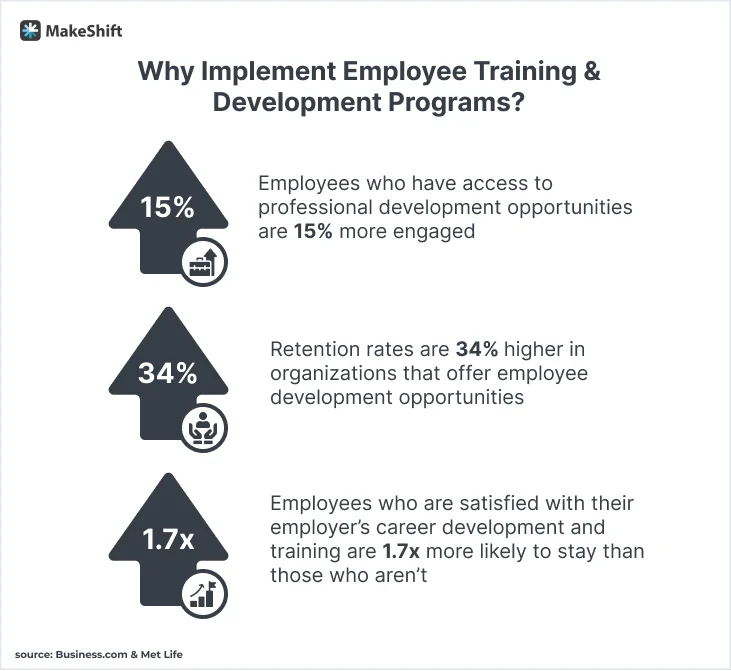
- Employees who have access to professional development opportunities are 15% more engaged.
- Retention rates are 34% higher among organizations that offer employee development opportunities.
- Employees who are satisfied with their employer’s career development and training are 1.7x more likely to stay than those who aren’t.
Offer growth opportunities like:
- Nurse residency programs
- Continuing education support
- Clinical ladder programs
- Cross-training opportunities
4. Address & prevent nurse burnout
Recognizing and addressing burnout early helps keep your team motivated and healthy. Train RN managers to recognize the signs of burnout so they can address it early and prevent it from spreading.
Implement 1 or all 4 of these strategies to get ahead of nurse burnout:
- Nurse-centric staffing solutions — Prioritize the needs and well-being of your nurses when creating staffing schedules. Offer the option of self-scheduling and enlist the help of AI-powered scheduling software to ensure safe nurse-to-patient ratios.
- Nurse burnout education and support — Provide nurses with education on stress management and offer emotional support to head off burnout to help them remain physically and mentally healthy while providing quality care.
- Harness technology to alleviate nurse workload — Integrate tech like electronic health records, AI tools, and staff scheduling software to reduce administrative tasks. This allows nurses to focus more on patient care and cut time spent on manual tasks.
- Squash the stigma around nurse burnout — Encourage open discussions about nurse burnout and mental health to help squash the stigma around burnout. This makes it easier for nurses to acknowledge when they need support, ultimately improving your retention rates, their well-being, and the care they provide.
5. Foster Nurse Engagement
Employee engagement is a critical factor in job satisfaction and retention. Studies have shown that organizations with highly engaged employees have a 31% lower turnover rate and increased employee loyalty.

Focus on increasing your nursing staff’s engagement at work through:
- Asking for regular feedback
- Giving recognition to those going above & beyond
- Offering professional development opportunities
- Implementing nurse-led initiatives like:
- Peer support programs
- Wellness challenges
- Collaborative decision-making
- Patient & family engagement initiatives
6. Offer nurse relocation assistance
Assisting with relocation costs helps entice nurses to move to your facility's area. This move is a win/win — they get a shorter commute, and you get more local nurses on staff.
This is essential for rural areas that lack enough medical personnel — almost 60% of areas with a shortage of primary care professionals are rural.
You can offer relocation assistance by:
- Providing a housing allowance
- Offering temporary housing while they get settled
- Moving expense coverage
- Assistance with housing search
7. Make the workplace a good place to be
Nurses work long hours with a demanding workload. They need to work quickly and efficiently, make on-the-spot, life-saving decisions, and offer empathy to the patients and their families.
That kind of hefty responsibility can take the starch out of even the most well-rested, competent nurse. Show your nurses you get the demands of their jobs by creating a workplace that supports them.
Consider these ideas to get the ball rolling:
- Healthy snack stations
- Comfortable break rooms
- Relaxation spaces
- Team building activities
Gather Feedback to Make Nurses Feel Heard
Encourage your nursing staff’s regular input on what would entice them to stay with your facility longer.
You can collect feedback through:
- Interactive staff meetings
- Anonymous nurse surveys (SurveyMonkey is a great tool for this.)
- Use nurse scheduling software with a team communication feature to encourage feedback
How MakeShift Can Help Raise Your Nurse Retention Rate
Want to raise the roof on your nurse retention rate? Sure you do.
At MakeShift, we get nurses.
In fact, chaotic nursing schedules are what got us into the scheduling business in the first place.
Our founder’s wife was a nurse whose schedule regularly collided with her personal life. She loved her job, but not having control of or access to her schedule was sucking all the enjoyment out of being a nurse.
MakeShift was developed to ease the burden of healthcare scheduling by taking a people-first approach. Our software makes scheduling more intuitive, smarter, and uber streamlined.
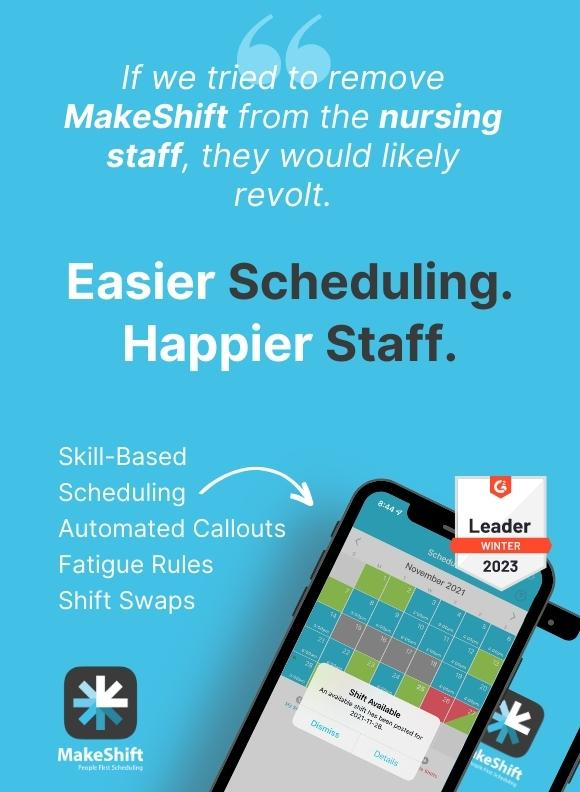
We offer key features that cater to nurses:
- Available Shifts — Whether it's an emergency or you're just short-staffed, broadcasting an available shift that your nurses can pick up can be a lifesaver. (To both you & them.)
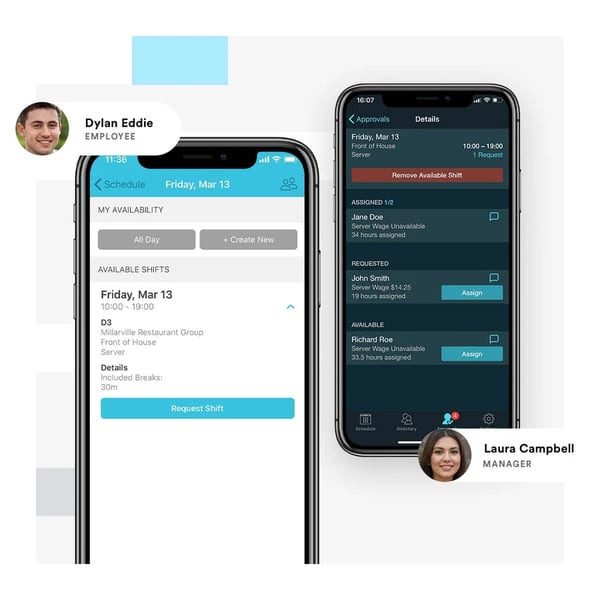
- Rotation-Based Scheduling — Build out your rotation templates and schedule your nursing staff on any length of rotation.
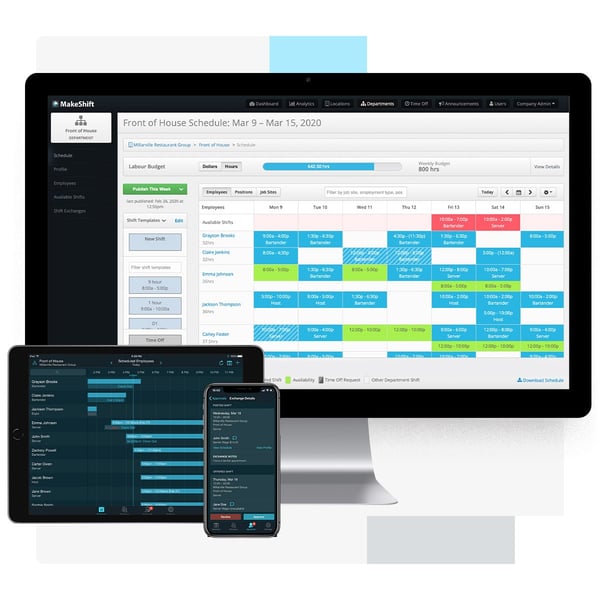
- Skills-Based Scheduling — Ensure you have the most highly skilled nurses in the right place at the right time.
- Shift Swapping — Allow your nursing staff to exchange shifts with one another, reducing the need to constantly update schedules manually.
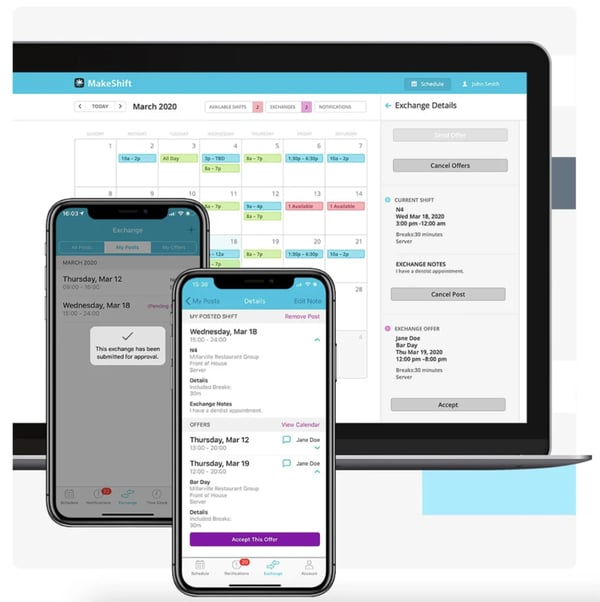
- Time Off / Leave Management — Quickly approve or decline employee time off requests to ensure you aren't scheduling staff when they’re unavailable.
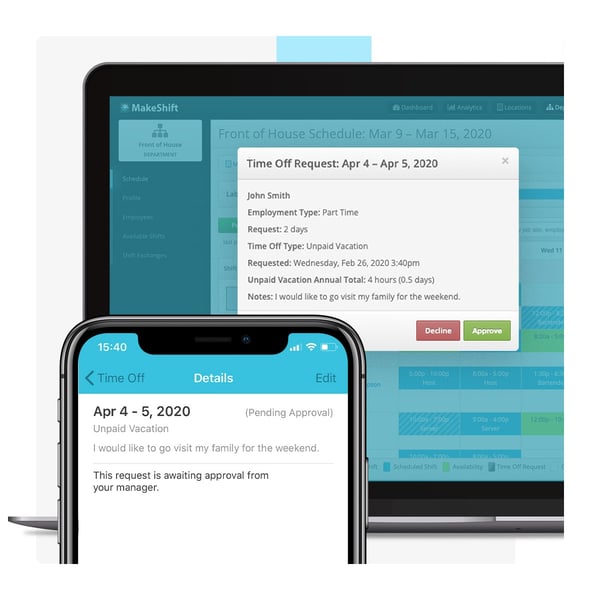
- A schedule in their pocket — Your nurses have easy access to their schedules on their phones. They can check it and make changes while cooking dinner at home.

Frequently Asked Questions on Nurse Retention
What is retention in nursing?
Retention in nursing is the ability of healthcare facilities to keep experienced nurses on staff for extended periods. It involves measures and strategies aimed at reducing nurse turnover, preserving institutional knowledge, and ensuring a stable and skilled nursing workforce. High retention rates are essential for maintaining quality patient care, minimizing recruitment costs, and promoting staff satisfaction.
What helps with nurse retention?
Nurse retention is improved by creating a positive work environment with supportive leadership, offering opportunities for career growth, recognizing nurses' contributions, and ensuring a healthy work-life balance. When nurses feel valued, have room to grow, and maintain a good work-life balance, they're more likely to stay in their jobs, benefiting both healthcare organizations and patients.
Why is nurse retention a problem?
Nurse retention is a problem because when experienced nurses leave their jobs frequently, it disrupts patient care, increases costs for hiring and training new nurses, and can lead to overworked and stressed healthcare staff. High turnover affects the quality of care and the well-being of both nurses and patients.
Beat the Odds of Low Nurse Retention
The challenges of nurse retention are significant, with national turnover rates on the rise and specialized departments experiencing even higher turnover. But…
You can beat those odds by being proactive.
Use the 7 strategies we gave you to improve your retention rates by prioritizing your nursing staff’s well-being. The long and short of it is happy nurses will stick around longer.
Want our help with improving your retention through smarter scheduling? We’d love to help. Schedule a free demo today.




